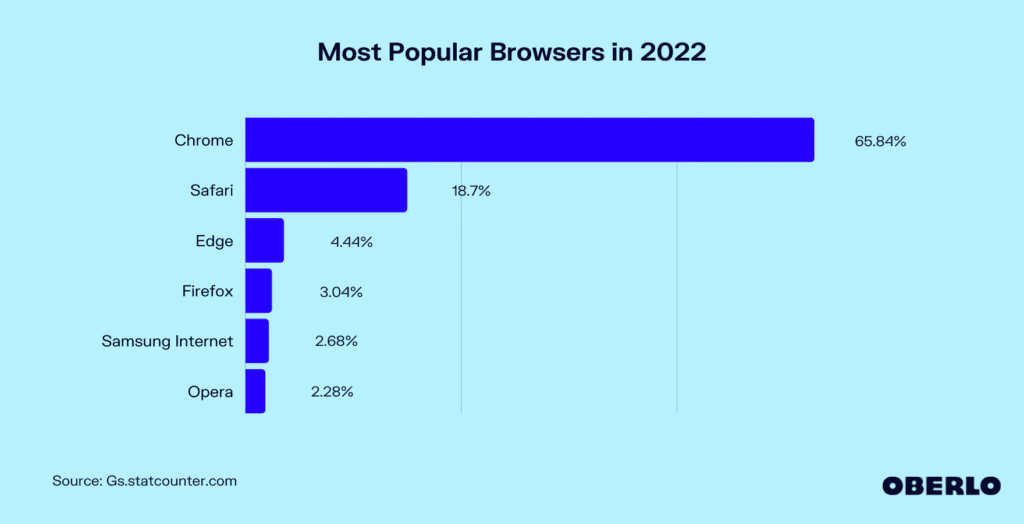Google’s made headlines for years as it perpetually teases at the demise of third-party cookies.

It’s not a tease, though. Google is parting ways with third-party cookies. It’s just a matter of when. As of today, third-party cookies will go away in 2024.
To make matters worse, Apple’s App Tracking Transparency feature continues to pose challenges.
Needless to say, advertisers are concerned. How can they roll out and optimize their programmatic campaigns without third-party cookies and other identifiers?
Alternative identifiers will eventually fill the void, but which ones?
Email? Probably.
Phone numbers? Yep.
Google’s Privacy Sandbox?
Absolutely.
What is the Privacy Sandbox, and what does it mean for advertisers and publishers?

What’s Google’s Privacy Sandbox?
Google’s Privacy Sandbox is a set of APIs designed to protect user privacy while allowing publishers and advertisers to target based on interest, demographics and more. The project “consists of new APIs that will allow advertisers to show targeted ads, but without having direct access to users’ personal details, as they do now,” writes Catalin Cimpanu at ZDNet.
Using the so-called ‘Differential Privacy’ techniques that Google has employed for its internal projects, the APIs block the Chrome browser from sharing identifying data until it can be lumped in with thousands of other users’ data points. It means advertisers can still track and target but introduces a layer of anonymity. Vox calls it a tightrope walk.
Recently, Google launched the first beta of its Privacy Sandbox on Android, allowing users and developers to test the new technology.
Anthony Chavez, Google’s vice president of Privacy Sandbox, said, “The Privacy Sandbox beta provides new APIs that are designed with privacy at the core, and don’t use identifiers that can track your activity across apps and websites.” Chavez continued, “Apps that choose to participate in the beta can use these APIs to show you relevant ads and measure their effectiveness.”
The Privacy Sandbox on Android shares similarities with Google’s Privacy Sandbox for the web, which will replace third-party cookies in Chrome when they disappear in 2024 (we think).
Understanding Ad Relevance and Impact with Google’s Privacy Sandbox
Google’s Privacy Sandbox sounds great in theory, but how does it actually work, and how will it ensure ad relevance? Going from one-to-one targeting via third-party cookies to one-to-many targeting via Privacy Sandbox certainly can’t be a good thing, right?
Let’s break down what we know about Google’s Privacy Sandbox and, more importantly, what it means for advertisers.
Showing relevant ads
Without third-party cookies, how will Google know which ad to show person X, Y, and Z?
The simple answer: Interest-based targeting via “the Privacy Sandbox privacy-preserving APIs.”
- Topics API: Topics are categories the browser concludes based on the pages you visit. For example, Topics may categorize ESPN as “sports” and The New York Times as “news.” The browser then collects a handful of topics commonly associated with the websites someone’s visited.
From a high level, Privacy Sandbox is saying, “someone is interested in X website, so they may also be interested in Y website.” They’re then shared with advertisers and used to deliver relevant ads.
Users can go into Chrome, see the topics they’re “linked” to and remove or disable any they don’t like. It’s like disabling third-party cookies in the post-cookie world. - FLEDGE: FLEDGE addresses the constant need for remarketing, i.e., delivering ads based on what someone has looked at online in the past. Remarketing is why you often see ads “following” you online.
With FLEDGE, the sites of advertisers someone visits can inform their browser that they’d like to show them ads. They can also share information with their browser, including the ads they’d like to show. Then, when someone visits a website with ad space, an algorithm informs ad delivery.
Here’s a diagram that outlines FLEDGE:

At one point, there was FLoC, which grouped people based on their browsing patterns. However, FLoC was stopped in 2021.
Check out this article to learn more about interest-based targeting without third-party cookies.
Measuring advertising impact
Third-party cookies have been the gold standard in digital for so long because they made tracking and measurement easy. Cookies basically put a name tag on someone, followed them around online, and then said hi (with another ad) when the time was right. Guesswork wasn’t necessary; there was always a one-to-one connection between advertisers and consumers.
That’s gone, so how will Google’s Privacy Sandbox allow advertisers to measure the impact of their campaigns?
Attribution Reporting API.
Attribution Reporting API measures “when an ad click or view leads to a conversion, such as a purchase on an advertiser site.”
According to Google, the API allows for the measurement of two events linked together: an event on a publisher’s website—think a user viewing or clicking an ad—with a subsequent conversion on a website.
Here’s a breakdown:
Event-level reports link a click or view with data on the conversion side. Google says these reports help answer the question: “How can I improve my return on investment?”
Summary reports aren’t tied to a specific event on the ad side but offer richer conversion data than event-level reports. Google says these reports help answer the question: “What is my return on investment?”
Looking Ahead to a Better Internet and More Thoughtful Advertising
Third-party cookies aren’t the enemy. They never were.
At their core, third-party cookies facilitated the fundamental value exchange on which the internet was built: you see ads in exchange for (most of the time) free content.
Third-party cookies are powerful, turning many people off from targeted advertising over time. It’s why most people go out of their way to avoid ads via ad blockers, skipping, or paying for ad-free services.
Six months before Google announced the initiative, a Think with Google blog positioned the idea behind the sandbox project. “When you work in digital advertising, it’s easy to forget what it’s like to be an average internet user,” Global Product Strategy Lead Kelsey LeBeau wrote. “But when you take a step back and experience the web as most people do, you begin to understand why so many people employ ad blockers.”
Misconceptions aside, third-party cookies are on their way out, and advertisers will immediately need an alternative way to deliver, optimize, and measure their campaigns across the addressable internet.
Google’s Privacy Sandbox could be one of those ways.
The Privacy Sandbox is among the first steps “in exploring how to address the measurement needs of the advertiser without letting the advertiser track a specific user across sites.” Google is the king of ad tech — if the Privacy Sandbox threatened advertiser reach or ability to target (or ad revenue) in any way, you can rest assured they wouldn’t move forward. Instead, it seems to be a way to address consumer concerns with privacy.
If the philosophy behind the project is sound, a Privacy Sandbox across browsers won’t mean a decrease in revenue for publishers or the nullification of targeting for advertisers. Google seems to think it simply means users will be less likely to use ad blockers.
For more of a developer view on Google’s Privacy Sandbox project, you can check out its series of explainers designed to encourage commentary from the web community.
For more insights, sign up for MediaRadar’s blog here.



